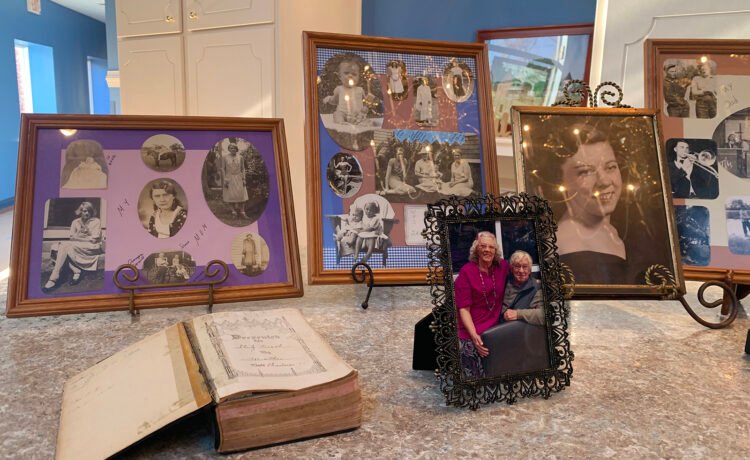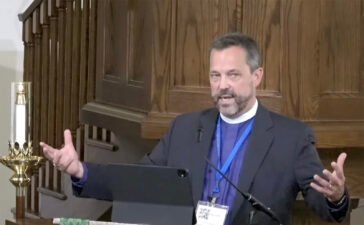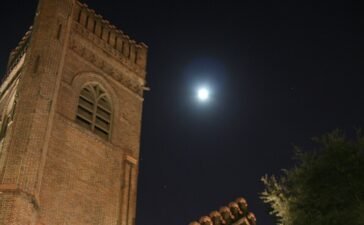(RNS) — Grief runs by its own clock. Time speeds up and slows down at whim, but runs right on schedule in the land of the living.
With or without grief, the next season comes. Winter ice follows autumn brown, which follows summer sun which follows spring buds which follow winter’s fallow death. The calendar year can be an anchor that holds steady in the ever-changing waves. Or, to change the metaphor, the wild swaying of grief time is stitched into stiff calendar time.
For Christians, the church calendar offers a way of ordering the vicissitudes of life. Whether high church or low, liturgical or not, nearly all church traditions mark at least some of the most significant events in the life of Christ and the church. Hope, suffering, grief, defeat, triumph, doubt and wonder keep no schedule in our own lives. But the church’s orderly remembrance of all these by marking the holy days celebrated throughout the year makes room for all the ups and downs that mark earthly life and eternal life.
The Christian History Institute observes that “One of the distinctive aspects of the Christian faith is that it is a story rooted in time — centered around the true story of a Savior who lived at a moment in history that we can pinpoint. Because of this, Christians began very early to celebrate the life, death, and Resurrection of their Savior by marking time.”
The shortest story in the Bible is two words: “Jesus wept.” The conflict is built right in. The omnipotent, omniscient creator of and power over all the universe is experiencing grief. He responds with compassion to the grief of others, sharing in it.
But that’s not the whole story, of course. These words appear in John 11 as Jesus faces news of the death of his dear friend Lazarus. In grief, Jesus conquers death, raising Lazarus to life again. It is a foreshadowing of Jesus’ own resurrection — and ours. From death, life. From grief, gladness.
Just as the Christian faith is a story rooted in time, so, too, are our lives’ stories rooted in time.
This year following the death of my mother has been marked for my family by many firsts without her: Thanksgiving, Christmas, her birthday, Mother’s Day, my parents’ wedding anniversary and now the first anniversary of her death.
Each season over this past year has brought fresh memories — both hard and sweet, both recent and long past. Such memories have a way of erasing time. Some reel the past in, near enough to the present to press in, crush and take my breath away. Some memories make it seem like the last months, weeks and days of my mother’s life were a lifetime away.
Grief is like this, nonlinear. It circles and dances, zooms in and out, plays hide-and-seek, disappearing for a while only to find us once more when we least expect it. As Courtney Ellis writes in “Looking Up: A Birder’s Guide to Hope Through Grief,“ “Grieving takes the time that it takes. It doesn’t like to be hurried. … The only way out is through, and through will take time.”
With each season’s passing, I remembered my mother preparing her garden beds for winter. I remembered her scattering seeds across snow for the birds in winter. I remembered her relish in planting flowers in early, early spring. I remembered her last summer with us, so weak, so strong, so certain something was wrong. If the body keeps the score — and it does — then the seasons of the natural world and the anniversaries of human celebrations are the hoops that catch the orbs of our memories as they course through the air and seek to land.
This year, for the first time, I attended a worship service that celebrated All Saints’ Day, a day to remember all believers who have passed from this life into eternity. I was deeply moved and comforted by this observance given the loss of my mother, which was just shy of one year ago. I hadn’t planned or scheduled the grief followed by hope that the service brought me. Rather, the church calendar had scheduled it for me long, long ago, when I didn’t know I needed it.
The celebration of All Saints’ Day at church helped me not only to remember my mother’s faithfulness while she lived this earthly life, but also to glimpse the glory she lives in now.
As we sang — I for the first time— “For All the Saints,” my mother’s faith in Jesus and her presence right now with him became more present to me than it had in all the year past. Singing in unison with others of all the saints who have gone before us expanded my belief from personal and familial to historic and catholic. The fourth verse collapses time, joining the church militant and the church triumphant:
“And when the strife is fierce, the warfare long,
steals on the ear the distant triumph song,
and hearts are brave again, and arms are strong.”
I wept to think of my mother’s arms — once strong, then weak, now strong again forever.
The rhythms of grief, like all intermittent beats of time, turn the unrelenting march of life into a burst of song.






